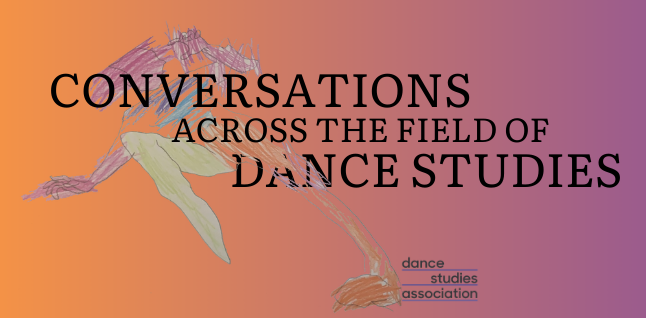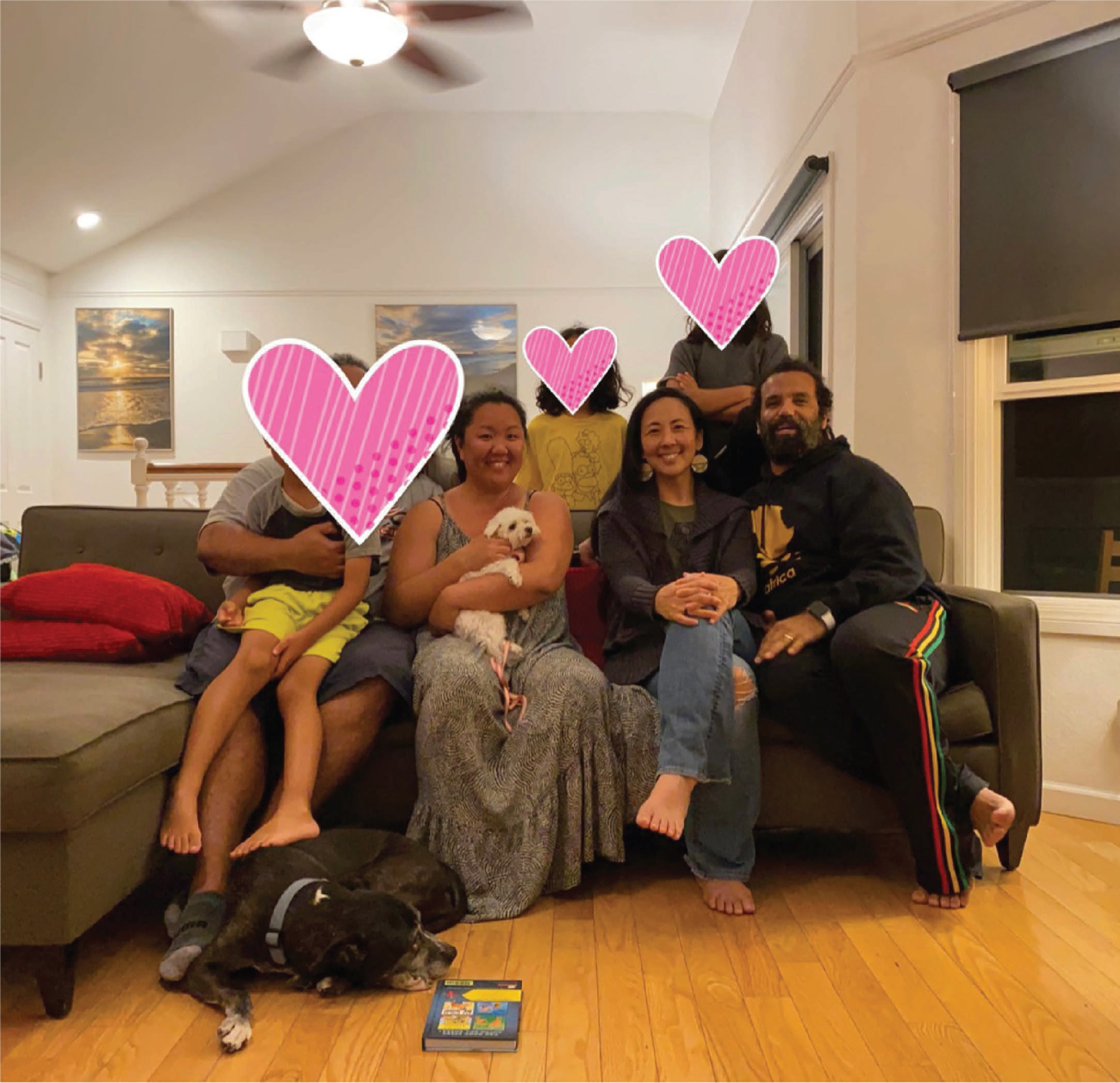grace shinhae jun & MiRi “seoulsonyk” Park
The process of planning, choreographing, and producing this issue of Conversations has left us feeling incredibly grateful for the generosity of time, knowledge, and love from each participant. Many of you are members of our families. It’s been an honor to cypher with you in this format and then to spend time listening deeply to what you shared as we engaged in the process of annotating each transcript. Your willingness to be open and vulnerable has left us verklempt on the regular and with the feeling of being a part of something greater than any of us individually.
Big love to our fam who were open to participating in this issue, but due to scheduling in these pandemic times, it just didn’t work out. We hope that we somehow can hear the conversations about memory and remembering with Ephrat Asherie and Archie Burnett as well as the much-needed conversation about sexual harassment/trauma with b-girls Candy Bloise and Rowdy.
Extra big props and love to BazeOne STF and Dr. Jesse Mills for literally living with us every moment of this journey. And to our kids who had to live hearing the refrain of “Hang on. Mommy is talking to 이모 again” ad nauseam for the better part of a year. There is no other Virgo b-girl 아줌마 duo in which we’d be able to do this.
Huge shout-outs to Rosemary Candelario for trusting this first issue of Conversations in this iteration to us. Your patience throughout the process of producing this with two working (one who is not yet even ABD!), non-tenured moms during a pandemic has been a salve. Thanks to Rachel Carrico for coming in as we conclude this process for continuing the patient work that Rosemary set the standard for. Thanks to each member of the editorial board for your mindful questions, comments, and edits as they pushed us to think through, debate, and articulate issues that matter. We have great gratitude and respect for all of the Dance Studies Association. We are proud to be in a community with you all who are innovating our field and forging a path for the humanities in the twenty-first century. Thanks to MPS for being open to how this knowledge production can take a new, digital shape.
Thanks to all of you who are part of the hip hop culture past, present, and future. We hope that, like anything in the culture, this publication is a starting point from which you will innovate knowing the ledge in ways we can’t even imagine right now. Take this method and flip the script again and again.
Finally, we thank YOU. We sincerely hope that, as some of the conversants stated, you get from these conversations what you need through this invitation to get down in this knowledge cypher. And that once you do, you keep the energy of these exchanges going in mindful ways in the classroom and your scholarship. Peace.
Credits
Cover Art + Logo: BazeOne STF
Music used with permission by big tara and DJ Kuttin’ Kandi of the Anomolies Crew: “No Illusion” by Anomolies, 427 & Zion I: https://youtu.be/2uvkskc-EJM
Photos courtesy of each participant’s personal collections.
Suggested Reading List
Alim, H. S. (2006). Roc the mic right: The language of hip hop culture. New York: Routledge.
Bragin, N. E. (2015). Black power of hip hop dance: On kinesthetic politics [PhD dissertation]. University of California, Berkeley.
Chang, J. (2005). Can’t stop won’t stop: A history of the hip-hop generation. New York: St. Martin’s Press.
Cox, D. (1984). Brooklyn’s furious rockers: Break dance roots in a breakneck neighborhood. Dance Magazine (April), pp. 79–82.
DeFrantz, T. (2004). The black beat made visible: Hip hop dance & body power. In Lepecki, A. (Ed.), Of the presence of the body: Essays on dance & performance theory (pp. 64–81). Middletown: Wesleyan University Press.
Durden, E. M. (2014). Hip-hop dance as community expression and global phenomenon. In Guarino, L. & Oliver, W. (Eds.), Jazz dance: A history of the roots and branches (pp. 184–194). University Press of Florida.
Fikentscher, K. (2000). “You Better Work!” underground dance music in New York city. Middletown, CT: Wesleyan University Press.
Fogarty, M. & Johnson, I. K. (Eds.). (Forthcoming). The Oxford handbook on hip hop dance studies. New York: Oxford University Press.
Grimes, D. Sabela. (2008). Predictably unprecedented. Blog socialdancemedia.blogspot.com.socialdancemedia.blogspot.com
Guevara, Nancy. (1995). Women Writin’ Rappin’ Breakin’,” In Perkins, W. (Eds.), Dropping science: Critical essays on rap music and hip hop culture (49–62). Philadelphia: Temple University Press.
Hager, S. (1984). Hip hop: The illustrated history of breakdancing, rap music, and graffiti. New York: St. Martin’s Press.
Johnson, I. K. (2011). B-boying and battling in a global context: The discursive life of difference in hip hop dance. Alif: Journal of Comparative Poetics, 31) 173–198.
Lawrence, T. (2009). 1970s Social dancing, culture, and the emergence of the contemporary club dancer. In Malnig, J. (Ed.), Ballroom, boogie, shim, sham, shake: A social and popular dance reader (199–214). Champaign: University of Illinois Press.
Osumare, H. (2007). The Africanist aesthetic in global hip-hop: Power moves. New York: Palgrave Macmillan.
Pabon, J. (2006). Popmaster Fabel. Physical graffiti: The history of hip-hop dance. In Chang, J. (Ed.), Total chaos: The art and aesthetics of hip-hop (18–26). New York: BasicCivitas.
Pabon-Colon, J. (2018). Graffiti grrlz. New York: New York University Press.
Park, M. (2002). Breakers: The next generation. Village Voice, 23 April. https://www.villagevoice.com/2002/04/23/breakers-the-next-generation/https://www.villagevoice.com/2002/04/23/breakers-the-next-generation/
Rivera, R. Z. (2003). New York Ricans from the hip hop zone. New York: Palgrave Macmillan.
Schloss, J. G. (2009). Foundation: B-boys, B-girls, and hip-hop culture in New York. New York: Oxford University Press.
Sommer, S. (2008). C’mon to my house: Underground house dancing. In Malnig, J. (Ed.), Ballroom, boogie, shim, sham, shake: A social and popular dance reader (285–301). Champaign: University of Illinois Press.
Spady, J. G., Alim, H. S., & Meghelli, S. (2006). Tha global cipha: Hip Hop culture and consciousness. Philadelphia: Black History Museum Press.
Zanfagna, C. (2008). The Multiringed cosmos of krumping: Hip-Hop dance at the intersections of battle, media, and spirit. In Malnig, J. (Ed.), Ballroom, boogie, shimmy sham, shake: A social and popular dance reader (pp. 337–353). Champaign: University of Illinois Press.

